Warning: strlen() expects parameter 1 to be string, array given in /home2/orbman69/public_html/wp-includes/functions.php on line 262
(Last Updated On: )
THINK ABOUTIT SIGHTING REPORT
Date: June 27, 1970
Sighting Time: 1140A
Day/Night: Day
Location: Near Rio de Janeiro, Brazil
Urban or Rural: Rural
Hynek Classification: CE-III (Close Encounter III) Close observation with animate beings associated with the object.
Duration: 30-40 minutes
No. of Object(s):
Size of Object(s):
Distance to Object(s):
Shape of Object(s):
Color of Object(s):
Number of Witnesses:
Source: Dr. W. Buhler, Flying Saucer Review. Vol. 17, No. 3. May/June 1971 (WaterUFO.net) Original Source
Summary: This incident, which took place in broad daylight, is notable because it was certainly observed by, at least eight witnesses. A great metallic disc came down on the surface of the South Atlantic Ocean. The disc remained on the surface of the water for half an hour, and two crewmen were seen inside it. When the disc took off, it left behind it on the sea a sort of ring or hoop.
Full Report
UFO ON THE SEA NEAR RIO
Dr. W. Buhler
When in London last year, Dr. J. Allen Hynek spoke of the obvious importance of multi-witness cases. This Interesting Brazilian episode, which certainly falls within that category, was reported to us by Dr. Buhler when in England soon after its occurrence. Gordon Creighton prepared the material for publication; but this was delayed as we needed clarification on a few points. We are now able to present, with a few addenda to the concluding section on previous occurrences in the Tijuca area, a much more detailed version after perusal of the original Portuguese text by the author which appears in SBEDV Bulletin No. 74/79 for May 1970-February 1971.
This incident, which took place in broad daylight, at 11:40 a.m. on June 27, 1970, is notable because it was certainly observed by, at least eight witnesses, and because it illustrates graphically how, the UFOs, are approaching ever closer to our densely populated urban centres. A great metallic disc came down on the surface of the South Atlantic Ocean, not much more than 500 metres or so from the Avenida Niemeyer, a famous coastal road, cut out of the cliffs, which affords a beautiful view over the, sea and runs in a south-westerly direction from the Rio de Janeiro suburb of Leblon.
The disc remained on the surface of the water for half an hour, and two crewmen were seen inside it, wearing helmets and bright grayish aluminum-colored garments resembling the garb of our astronauts. When the disc took off, it left behind it on the sea a sort of ring or hoop which had apparently served some function, perhaps as a float or stabilizer on which it had rested.
The Avenida Niemeyer is at a height of some 30-40 metres above the sea along the section in question, and the particular house from which the witnesses made their sighting is located even higher up, above the road. It was a Sunday, and in fine weather no less than 1,800 cars, so we estimate, would have been passing there hourly. Earlier on the morning in question I had been in that area myself, and I recall that at 7.00 a.m. the sky was still fairly clouded over.
( it should be borne in mind that in the southern hemisphere June is in the less sunny part of the year ).
Three of the adult witnesses, whom I have interviewed, are Senhor Aristeu Machado and his wife Dona Maria Nazaré Machado, who live at No. 318, Avenida Niemeyer, and their neighbour and visitor, Sr. João Aguiar, who is an official of the Brazilian Federal Police and resides nearby at No. 210 on the same Avenue. The fourth adult witness is the Machado’s eldest daughter, Creuza, aged 23. The remaining four witnesses were the rest of the Machado girls, Consuelo, aged 14; Rosemary, aged 10; Margarida, aged 8; and Cátìa, aged 5 (I did not interview any of the five girls, but only their parents and Sr. João Aguiar). It was in fact Dr. Carlos Netto, of the Rio newspaper “Diário de Notícias”, who notified me immediately of the occurrence, with the result that I was able to accompany him to the spot and talk to the witnesses at four o’clock on the afternoon of the same day. (Incidentally, it may be noted that the “Diário de Notícias” was the first Rio de Janeiro newspaper to treat the UFO Problem seriously and with a certain degree of consistency.)
The episode begins, and occupants seen
The Machados’ account is as follows:
Dona Maria Nazaré Machado was in the kitchen, preparing the lunch. From time to time she would step out on to the veranda, where the rest of the family, with Sr. Aguiar, were amusing themselves with a party game. At one point she enquired what the time was. It was 11:38. About two minutes after that, Sr. Aguiar happened to glance out over the sea, and quickly called the attention of the others to what he thought was “a motor-boat striking the water,” for, as the object descended, it threw up spray on all sides around it
At once they all abandoned their game and began a vigorous discussion as to what to do about it, and as to whether or not the “motorboat” was in need of assistance, for they could see two “bathers” inside the craft who seemed to be signaling with their arms. Sr. Aguiar was positive that there were two persons in the craft, wearing shining clothing and “something on their heads.” They seemed to be “thickish set and quite small.”
The two persons in question appeared to be working on the deck of the craft, which was of a grayish metallic colour, and looked as though it might have been between 4 and 6 metres in length. It was covered with a transparent cupola (Fig. 1).
It was decided that Sr. Aguiar should run to the nearby Mar Hotel to telephone to the rescue authorities, while the rest of the party continued to watch the object closely. It had come down on the sea just where the water always looks darker, at the dividing line between the darker in-shore water and the clearer water of the open ocean .
The newspaper report in “Diário de Notícias” of June 28, 1970, states that the area of the sea where the disc came down was about 500 metres from the shore, although later examination of the case suggests that it could well have been rather more than that, perhaps 700, or even 1,000 metres. In any case, remarkably close to the shore!
In my subsequent enquiries I learnt that the disc at one time moved in about 100 metres nearer to the shore. No sound was heard from it at any time, nor did it display the characteristic type of “bobbing” movement to have been expected from a boat.
Disc takes off
The time spent by Sr. Aguiar in going to and from the Mar Hotel (1 kilometre distant, towards Leblon) was, at the outside, 23 to 35 minutes. When he returned to the Machedos’, apartment, the disc was still on the sea, and he was one of those who saw it take off again. We may say therefore that the duration of its stay on the water was about 40 minutes.
Sr. Aguiar informed us that when the disc took off, it did not rise straight up, but skimmed along for about 300 metres on the surface of the sea, throwing out the usual sort of bow-wave such as we see with our own fast motor-boats. In fact, it was only when the machine had become airborne and was moving away in a low arc out to sea towards the south-east that the witnesses realised that it was not an ordinary boat, but a flying saucer…
Dona Maria Nazaré showed herself to be an excellent observer for, as the disc took off, she noted that, on its under-side (Fig. 3), it had a hexagonal-shaped object which she said looked like the Brazilian fruit known as the carambola.*
* Translator’s Note: The carambola, also known as the pitanga, or the Surinam Cherry (Averrhoa Carambola, L.). A juicy, quince-flavoured fruit. Its segments, I recall, are most strangely shaped, very angular, like nothing I have ever seen elsewhere. But although we had carambola trees in our Brazilian garden, neither my wife nor I can now (at this distance in years) make a sketch of these segments from memory, and I have discovered no handy source in England where an illustration may be found—G. CREIGHTON.
This object seemed as though retracted up into the craft, and there were a number of coloured lights on the carambola-like object, flashing always in the same sequence, viz.: green, pale yellow, and red. (Other reports have suggested one rotating light changing colours through this sequence.)
Occupants seen again
As stated, the disc appeared to be made of aluminum when resting on the sea, but once airborne, it looked transparent. At this point Dona Maria Nazaré could clearly see the two occupants sitting inside the craft.
There was little traffic along the Avenue at that hour, and consequently not much traffic noise. Nevertheless, as indicated above, none of the witnesses heard any sound that they thought came from the disc. Once airborne, the disc was speedily out of sight.
The “hoop” appears
On the area of sea where it had rested there was a “white, hooped-shaped object, of the size of a trunk or a chest” (Dona Maria Nazaré’s own description). After a short while this “hoop” sank. Then it reappeared, and from it there separated off a yellow, oval-shaped object the diameter of which, across its widest point, was approximately 40 centimetres, and which was floating with about 20 centimetres projecting above the surface of the water.
After remaining stationary for about three minutes, this oval, yellow object began to move slowly towards the beach, with its longer axis pointed in the direction of the witnesses’ house. At the further end of the object there was a greenish flange which later separated off from the main (yellow) body and continued to follow it “at a distance of about 80 centimetres.”
After a lapse of time which Dona Maria Nazaré estimated at about 15 minutes, the yellow object had come to a distance of about 120 metres from the shore. It then performed a right-angled turn left-wards, and headed off towards the beach at Gávea, still keeping always at more or less the same distance out from the rocks of the shore. This movement (westwards) was in fact contrary to the maritime current prevailing in the area at the time.
Dona Maria Nazaré then went down on to the road in front of her house and tried to observe the further movements of the yellow object. With her there were some boys who happened to come along at the time, and she pointed out the object to them. The boys tried to hit it by throwing stones at it, but without success. This phase lasted a further ten minutes or so, after which time it vanished from their view around the rocky promontory, some 500 metres from where they were standing.
Meanwhile the “white hoop” was still in view, after having disappeared temporarily several times, and it was steadily approaching the Gávea beach as though it were going to join up again there with the yellow object. They watched the white hoop for a total period of 20 minutes or so as it kept vanishing and then reappearing, until it too was finally lost to sight.
The family, who had been interrupted in their parlour game when they first saw the disc just before noon, only returned to the veranda to finish the game at 3.00 p.m., when the sighting was all over, and they did not get their lunch until 5.00 p.m.
As for the phone call made by Sr. João Aguiar, it was to the Harbour Police, whose headquarters are near the Calabouço Airport, in the central part of Rio de Janeiro. So it would have been at least an hour before, normally, one would have expected a Harbour Police patrol boat to have got to the scene. When he called them, the Harbour Police checked up on Sr. Aguiar’s own telephone number (he of course being a Federal agent himself) and they promised to send help to the parties involved in the presumed mishap off-shore. Sr. Aguiar was consequently quite surprised when, after only about 20 minutes, he saw a fast motor-launch heading out towards the islands (Ilha das Palmas and Ilha Comprida).
This motor-launch was no doubt one normally stationed at the Fort de Copacabana. We do not know whether its crew saw the UFO take off, but it may be assumed that they did, for they would have had the UFO in view long before they reached the area from which it took off and where the “white hoop” remained floating.
When they got there, the motor-launch stopped at a distance of about 1 kilometre from the shore. Then the witnesses saw the crew of the launch hoist aboard, with great difficulty, a cylindrical red object (the difficulty being due no doubt to the great weight of this object). Having done this, the motor-launch returned at high speed to its point of origin.
Commits and theories
We cannot, a priori, guess the purpose of such a descent on the sea by Extraterrestrials. Could it be that they aimed to investigate certain local conditions by means of some sondes (the objects floating in the sea which they released?) or were these latter perhaps spare parts, destined for one of the Extraterrestrials’ submarine bases, and which would have floated off, under automatic control, towards that base? Or could they perhaps have been automatic devices which, either afloat or submerged, could transmit information about the psychological reactions of the witnesses, say, in the house at No. 318, Avenida Niemeyer and, later, also of the folk bathing on the beaches at Gávea and Barra da Tijuca? Would these sondes perhaps have been recovered later, or would they have gone floating off to be lost in the sea ?
Or could they be some sort of devices which might have a long-term effect on human (i.e. terrestrial human psychology ?
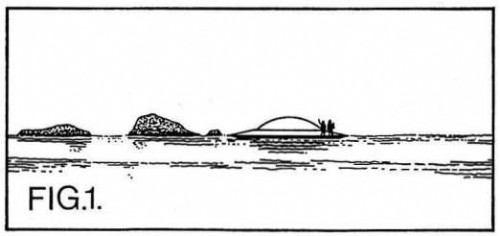
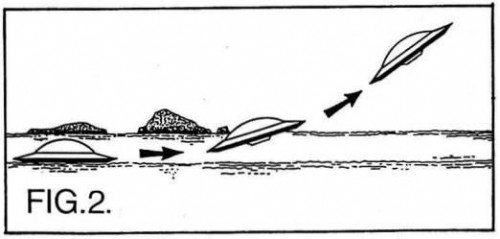
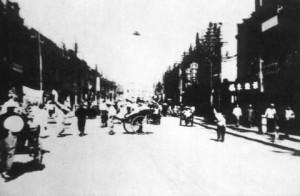
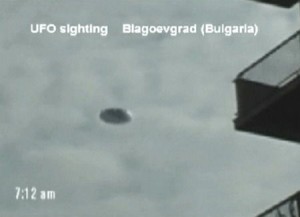
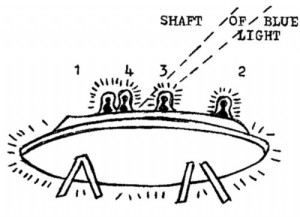
Related Reports
Warning: strlen() expects parameter 1 to be string, array given in /home2/orbman69/public_html/wp-includes/functions.php on line 262
3 min read
1947: 7 ft Aliens spotted in Brazil
Warning: strlen() expects parameter 1 to be string, array given in /home2/orbman69/public_html/wp-includes/functions.php on line 262
5 min read
1952: Barra da Tijuca, Brazil Photos
Warning: strlen() expects parameter 1 to be string, array given in /home2/orbman69/public_html/wp-includes/functions.php on line 262
1 min read
1952: Contact in Angatuba Mountains, Parana, Brazil